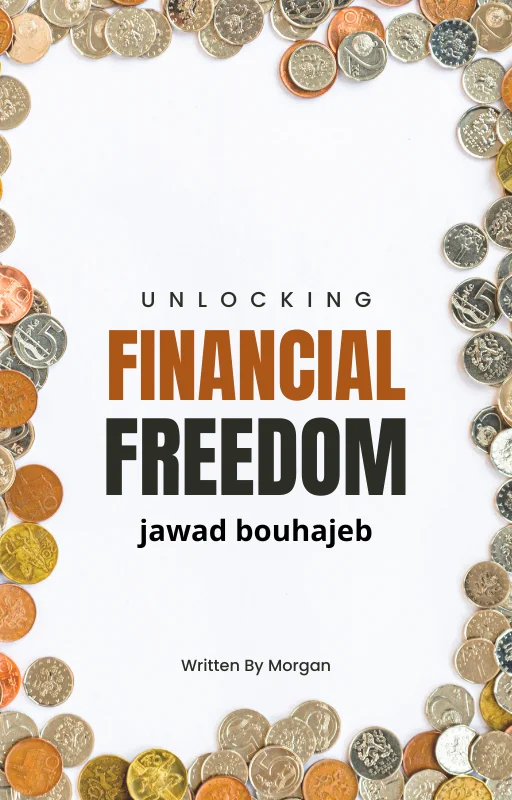
Introduction: What If Everything You Know About Investing Is About to Become Obsolete?
The landscape of investing is undergoing significant transformations, prompting critical questions about the viability of established strategies. What if everything you know about investing is about to become obsolete? This query may resonate with many, particularly in light of the unprecedented market fluctuations experienced in 2024. These changes have resulted from a confluence of factors including rising inflation, the excitement surrounding artificial intelligence advancements, and shifting political dynamics. For many investors, the fear of missing out on lucrative opportunities has intensified, paralleled by a growing anxiety over the potential loss of hard-earned savings.
As traditional investment approaches face scrutiny, a pivotal secret emerges for cultivating enduring wealth: mastering the unseen shifts in the market environment. With emerging trends gaining visibility, it is crucial to look beyond immediate fluctuations and consider the broader implications of these changes on investment strategies. The ability to navigate through volatile waters and recognize patterns that others may overlook can distinguish successful investors from their counterparts.
Moreover, the rapid pace of innovation, particularly in technology and finance, means that adherence to antiquated paradigms could result in missed opportunities for growth. Investors must familiarize themselves with the emerging opportunities that reflect the underlying shifts in consumer behavior and economic structures. By adopting a forward-thinking mindset and a comprehensive understanding of these unseen forces, one can better position themselves to seize the opportunities that await in 2025.
In this context, it is essential for investors to reassess their approaches and stay informed about the changing dynamics at play in their investment portfolios. Understanding that the marketplace is fluid, rather than static, will enable individuals to proactively adjust their strategies, protect their assets, and ultimately thrive amid uncertainty.
The 2025 Landscape – What’s Changing?
The financial environment leading up to 2025 exhibits three significant shifts that demand the attention of investors seeking to future-proof their wealth. The first of these transformations stems from geopolitical rebalancing, particularly influenced by the rise of emerging markets such as India and Vietnam. As traditional power dynamics evolve, the focus is shifting towards these developing economies. According to recent projections, Asia is expected to account for nearly 50% of global GDP by 2025, driven by innovation and growth in sectors ranging from technology to manufacturing. This economic shift presents unique opportunities and risks, as investors must adapt their strategies to leverage these changes while minimizing exposure to geopolitical tensions.
The second major shift is the remarkable advancements in climate technology. Beyond conventional Environmental, Social, and Governance (ESG) investment frameworks, there has been a significant emphasis on sectors that incorporate cutting-edge solutions such as carbon capture and the extraction of green minerals. The global market for green technology is projected to experience a surge, with investments soaring past $5 trillion by 2030. However, investors often overlook the underlying supply chain fundamentals that support these sectors, leading to potential pitfalls. Understanding the interplay between policy changes, technological advancements, and supply chain networks is essential for capitalizing on these opportunities effectively.
Lastly, we are witnessing a ‘second wave’ of advancements in artificial intelligence, which is set to redefine investment strategies. Unlike its predecessor, this wave is prioritizing infrastructure plays rather than consumer-facing applications. This shift suggests that sectors such as logistics, data management, and software for operational efficiency will become key areas of growth. Reports indicate that investments in AI infrastructure will surpass $100 billion by 2025, reflecting a triad of growth—industry maturation, increased adoption, and performance optimization—underscoring the necessity for investors to realign their portfolios with these emerging trends.
The ‘Secret’ Unveiled: Asymmetric Bets for 2025
As investors navigate the complex financial landscape of 2025, understanding the concept of asymmetric bets emerges as a pivotal strategy. This investment approach focuses on low-risk entry points combined with the potential for significant returns, allowing investors to enhance their portfolios without undue exposure to risk. Implementing asymmetric bets requires a multifaceted approach, where diversification and forward-thinking categories play crucial roles.
One actionable tactic is to diversify across varying time horizons. By investing in both short-term opportunities, such as energy storage stocks, and long-term trends like synthetic biology, investors can position themselves advantageously. Energy storage stocks are expected to surge as the demand for renewable energy solutions escalates; thus, they represent a potentially lucrative entry point. Conversely, synthetic biology boasts transformative possibilities for industries ranging from agriculture to healthcare, warranting long-term investment considerations.
Additionally, focusing on less visible infrastructure projects can yield significant returns. Investments in sectors such as copper mining and cybersecurity exchange-traded funds (ETFs) may initially appear obscure but are integral for future economic growth. Copper, a critical material for various technologies, is essential for the ongoing transition towards renewable energies. Similarly, as the reliance on digital infrastructure grows, investing in cybersecurity will be essential to safeguard assets in an increasingly interconnected world.
Finally, a strategic allocation of resources into high-risk, high-reward ventures, often termed ‘moonshots’—such as quantum computing—can also be beneficial. While these investments through specialized funds carry inherent risks, they can potentially yield transformative returns that dramatically enhance an investment portfolio.
Avoid These 2025 Traps: Mistakes to Sidestep
As investors look toward 2025, it is essential to be aware of common pitfalls that can significantly hinder wealth-building strategies. One of the most pressing concerns is the potential AI bubble. While the allure of investing in consumer-oriented AI applications is strong, focusing on foundational companies such as Nvidia, or robust cloud service providers, may yield more stable long-term returns. These companies not only possess established market shares but also offer essential infrastructure that supports a broad array of AI applications, thereby reducing exposure to the speculative nature of trendy consumer tech.
Furthermore, investors should not overlook the critical importance of defense technology investments. Given the rising global tensions and conflicts, advanced systems in areas such as drones and cybersecurity are becoming more essential. Investing in companies that specialize in defense technology can provide significant returns amid geopolitical uncertainties. This sector often possesses a resilient demand and can offer a counterbalance to investments in more volatile markets.
Another critical area that may pose risks to investors is the potential for changes in tax regulations. As countries around the globe contemplate implementing new minimum tax policies, technology assets could face altered tax burdens that might significantly impact returns. Investors must remain informed about these developments and consider the implications for their portfolios. Careful asset structuring is paramount to mitigating any adverse tax effects in the future. Failure to adapt to these changes could result in diminished returns, underscoring the need for strategic foresight in investment planning.
